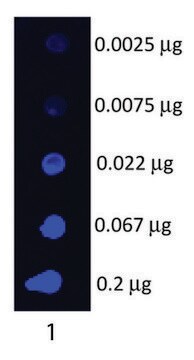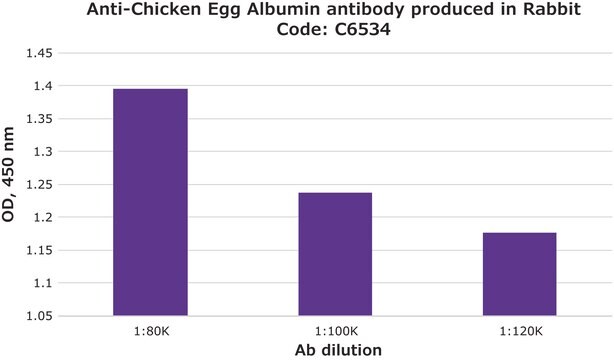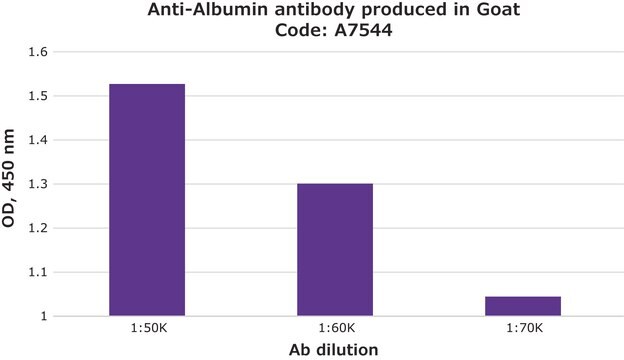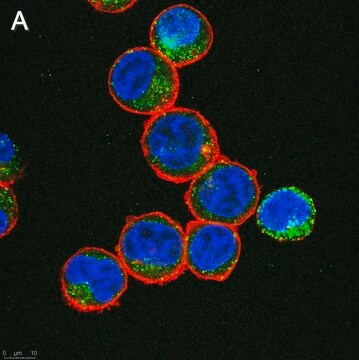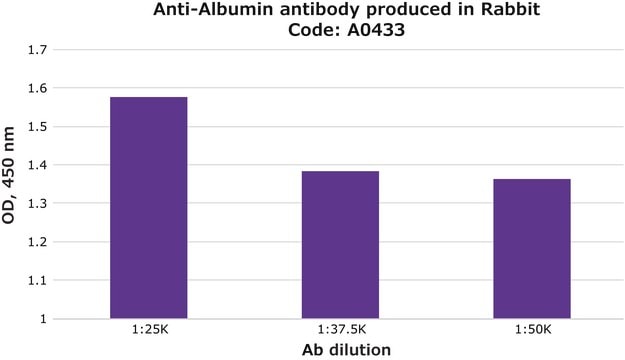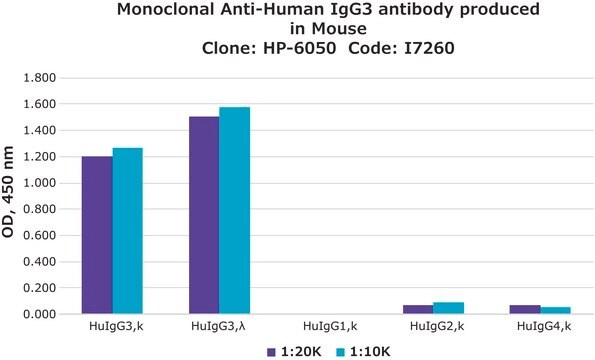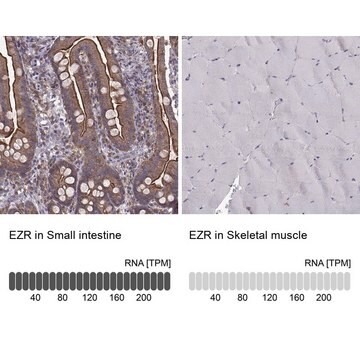Wichtige Dokumente
SAB4200867
Anti-PMEL antibody produced in rabbit
affinity isolated antibody, buffered aqueous solution
Synonym(e):
ME20-M (ME20M) Melanoma-associated ME20 antigen, Melanocyte protein, Melanocyte protein Pmel 17, Melanocytes lineage-specific antigen GP100, Melanoma gp100, P1, P100, Premelanosome protein, Silver locus protein homolog
About This Item
Empfohlene Produkte
Antikörperform
affinity isolated antibody
Qualitätsniveau
Form
liquid
Speziesreaktivität
human
Konzentration
~1 mg/mL
Methode(n)
immunoblotting: 1:1000-1:2000 using human melanoma SK-MEL-28 cell lysate
UniProt-Hinterlegungsnummer
Versandbedingung
dry ice
Lagertemp.
−20°C
Posttranslationale Modifikation Target
unmodified
Allgemeine Beschreibung
Spezifität
Anwendung
Detection of the PMEL band by Immunoblotting is specifically inhibited by the immunogen.
Biochem./physiol. Wirkung
PMEL fibrils have an amyloidogenic nature and share features with pathological amyloids.4 Mutations in PMEL are associated with pigmentation disorders and/or impairments in eye development in various species.1,5,6
PMEL is suggested an excellent model system to study mechanisms of intracellular amyloid formation.1
Physikalische Form
Lagerung und Haltbarkeit
Haftungsausschluss
Lagerklassenschlüssel
12 - Non Combustible Liquids
WGK
WGK 1
Flammpunkt (°F)
Not applicable
Flammpunkt (°C)
Not applicable
Hier finden Sie alle aktuellen Versionen:
Analysenzertifikate (COA)
It looks like we've run into a problem, but you can still download Certificates of Analysis from our Dokumente section.
Wenn Sie Hilfe benötigen, wenden Sie sich bitte an Kundensupport
Besitzen Sie dieses Produkt bereits?
In der Dokumentenbibliothek finden Sie die Dokumentation zu den Produkten, die Sie kürzlich erworben haben.
Unser Team von Wissenschaftlern verfügt über Erfahrung in allen Forschungsbereichen einschließlich Life Science, Materialwissenschaften, chemischer Synthese, Chromatographie, Analytik und vielen mehr..
Setzen Sie sich mit dem technischen Dienst in Verbindung.